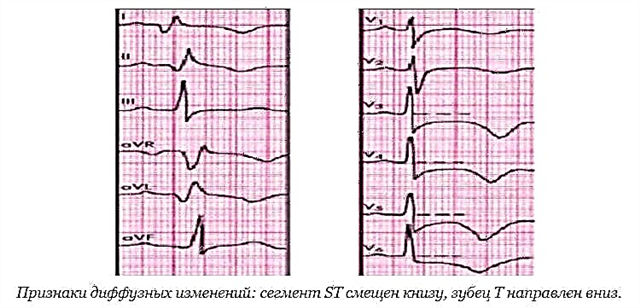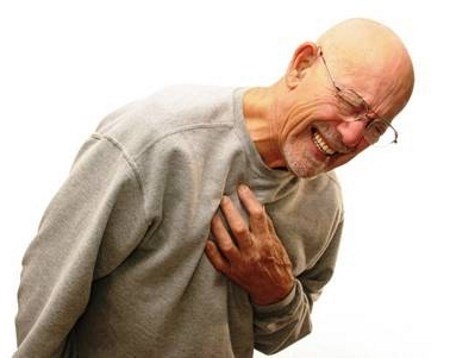To successfully stop a hypertensive crisis, emergency care must be performed competently and promptly. Observing the existing algorithm of actions, you can minimize the consequences of a dangerous attack.

What happens to the person?
The number of people suffering from hypertension is increasing every day. All hypertensive patients, as well as their family members, need to know what a hypertensive crisis is, when urgent help is required and what is the algorithm of actions that will not get confused in such a situation.
A sharp jump in pressure, as a result of which the patient's well-being worsens, is the main symptom of a condition called a hypertensive crisis. It is impossible to predict its occurrence. However, one thing is known: this insidious ailment disrupts the work of the most important internal organs and blood supply systems, and it is also the cause of a sharp deterioration in vision.
Emergency care for a hypertensive crisis is important in the first 24 hours of the development of pathology. Its action is aimed at stopping symptoms as quickly as possible, which can lead to serious problems.
Drug treatment should be carried out with drugs that normalize blood pressure. Self-medication in this case is unacceptable. Medicines should only be selected by competent specialists.
The reasons that can lead to the occurrence of a hypertensive crisis:
- transferred stress and, as a result, constant psychological stress;
- a sharp change in weather (sudden cold snap or warming, strong wind, storm);
- alcohol intoxication;
- salt abuse;
- self-withdrawal of drugs necessary to stabilize pressure.
A person who has hypertension, constantly experiencing psychological discomfort associated with fears, panic, anxiety, falls into the risk group. To minimize the likelihood of pathology, it is necessary to learn how to deal with stress.
In medical practice, there are several types of hypertensive crisis, which are characterized by varying degrees of severity.
The first type of crisis
This condition can be called short-term. It lasts from 30 minutes to two hours. During this period, the patient becomes extremely agitated, he has an increased feeling of anxiety, fear, which is complemented by an obsessive headache. Often, dizziness joins the listed symptoms. The person notes a sharp, pressing pain in the chest area. On visual inspection, you can see that the skin of the face and neck is red in color. In order to determine the cause of the symptoms, the patient is prescribed biochemical tests. As a rule, with the development of a hypertensive crisis, the number of leukocytes increases. Analysis of a person's urine indicates the presence of protein in the sample. These patients are characterized by high blood pressure with a rapid pulse.
The first type of crisis does not have serious complications on the body, therefore it is called "uncomplicated". If the patient has such a problem, first aid should be timely. Treatment - adherence to bed rest and taking medications that stabilize the pressure, which are prescribed by the doctor, individually selecting each drug and its dosage.
Second type
In this condition, the patient experiences similar symptoms described above, but they are more pronounced. Patients experience dizziness, pressing heart pain, severe nausea, vomiting, and vision problems. This type of crisis is dangerous with serious complications that end in a heart attack, stroke, pulmonary edema. A biochemical blood test shows the patient has a high ESR and overestimated leukocyte counts. Neurologists call this crisis "complicated." This condition requires immediate relief of symptoms and the implementation of certain measures. Qualified help to the patient must be provided as quickly as possible, because any delay is fraught with collapse, irreversible processes, disturbances in the work of the circulatory system and even death. A hypertensive crisis of the second type, as a rule, is characterized by attacks that are of a periodic nature. The risk group includes people suffering from chronic hypertension. Patients in this category need to be constantly monitored by medical specialists in order to prevent the onset of a crisis.
Inappropriate drug intake and overdose cause various complications and problems with normal blood supply, as a result of which tissues and vital organs will experience oxygen deprivation.
The doctor prescribes drugs, taking into account factors such as age, upper and lower pressure limits, and the specifics of the disease.
Hypertensive crisis is one of the most common medical conditions. About 30% of the adult population of our planet have high blood pressure, which means they are at risk. That is why it is very important to correctly recognize the signs of a crisis. Its symptoms and first aid provided on time will determine how serious the consequences of such a condition will be for the body. The reasons that can cause a hypertensive crisis are of a psychoemotional nature: they are constant experiences, a feeling of anxiety, fear.
The following symptoms indicate the development of an attack:
- A sharp increase in blood pressure. People with hypertension do not have an established norm for it. The usual medical parameters of blood pressure observed in healthy people can be critical for patients with hypertension.
- A sharp, haunted headache in the back of the head, which may be accompanied by dizziness and loss of consciousness.
- Vomiting reflexes or violent vomiting caused by nausea.
- Deterioration of vision. Often, patients notice clouding, blurring, black dots in front of the eyes.
- The body temperature rises, the person begins to freeze, tremors appear throughout the body.
- Redness of the skin on the face and neck.

The causes of a hypertensive crisis lie in the psychological state of a person. It is very important to cope with mental disorders, in which the heart rate increases greatly, shortness of breath begins, and profuse sweating.
If all the symptoms indicate a hypertensive crisis, and first aid to the patient is provided out of time, this can cause serious pathologies.
Very often, headache and dizziness can be the result of other dangerous diseases that the patient does not know about. If an attack of dizziness is caught by surprise, you need to sit down and try to focus your gaze on some object. If the attack is repeated, an urgent need to contact a specialist. The headache cannot be tolerated by drowning it with pills. Regular headaches don't have to happen all the time in a healthy person.
If, after taking medication, the pain syndrome decreases, but discomfort still remains in the back of the head, the patient should immediately consult a doctor. After the examination, the doctor will prescribe an effective treatment.
How to provide first aid?
Every experienced hypertensive person is, as a rule, well aware of his disease and has at home drugs that he uses to relieve a hypertensive crisis. First aid can be provided through the introduction of drugs intramuscularly, which will relieve the symptoms of high blood pressure.
It should be borne in mind that this practice is used only for uncomplicated hypertensive crisis of the first degree. These drugs include: "Furosemide", "Dibazol", "Magnesia sulfate", "Antispasmodics", "No-shpa" and "Papaverin".
Often, in case of a first-degree hypertensive crisis, intramuscular administration of these drugs completely relieves the symptoms of an attack and normalizes the patient's pressure.
It is impossible to predict the appearance of pathology. It can happen at home, at work, in a restaurant, on the street. It is very important that the hypertensive crisis is eliminated quickly, therefore emergency care must be provided promptly, its algorithm is described below.
How much time is there?
If a patient develops a complicated hypertensive crisis of the second degree, all his symptoms are observed, first aid involves an urgent call to doctors. It is very important to stop an attack in the first 24 hours after the onset of the main symptoms.
 Health workers stop a hypertensive crisis, guided by a medical protocol. It describes the standard of care for each specific disease. According to the protocol, the ambulance paramedics' bags are even packed. Therefore, it is very important when calling an ambulance to say that the patient has symptoms of a hypertensive crisis.
Health workers stop a hypertensive crisis, guided by a medical protocol. It describes the standard of care for each specific disease. According to the protocol, the ambulance paramedics' bags are even packed. Therefore, it is very important when calling an ambulance to say that the patient has symptoms of a hypertensive crisis.
The actions of ambulance workers are aimed at quickly reducing high blood pressure by slowly administering drugs that remove the hypertensive effect.
This or that medicine is used depending on the general condition of the patient and blood pressure indicators. When choosing a drug, the age of the patient, his weight, the clinical picture of the disease, what treatment the patient was taking, and the general condition of the body are of great importance.
Ambulance paramedics use the following drugs in their practice:
- "Dibazol";
- Furosemide;
- "Clonidine";
- Droperidol.
These drugs are administered in a clear sequence and dosage that is needed for a particular patient's condition. If an ambulance is called too late, and the patient has complications, he is immediately admitted to the hospital, where he will be prescribed appropriate treatment.
What to do indoors?
First aid for a hypertensive crisis indoors involves the implementation of a certain algorithm of actions.
- Call an ambulance.
- Help the patient to take a semi-sitting position, prop him up with pillows.
- Unbutton clothing so that the victim can breathe freely.
- Open the windows so that fresh air can enter the room.
- Put an ice pack on your forehead and a warm heating pad on your feet.
- Give the victim his usual blood pressure medicine (if any).
- Give Captopril tablet to dissolve. In case of severe headache, the patient can take one tablet of "Furosemide".
This algorithm for providing emergency care refers to pre-medical methods for hypertensive crisis and does not replace a full-fledged medical examination. The basic rule of such help is not to harm the patient. Therefore, all drugs used by the victim must have a clear dosage.
For example, an overdose of "Captopril" can lead to angioedema, the consequences of which will be disastrous for the body. It would seem, how can "Nitroglycerin" harm? An increased dose of the drug can provoke a rapid drop in blood pressure and serious complications of the circulatory system. In the event of a complicated crisis, the patient needs more serious medical attention.
What to do outside?
A hypertensive crisis can happen at any time, so everyone should know how to give first aid. This condition often occurs due to changes in weather conditions. Frost has a great effect on the body of hypertensive patients, which constrict blood vessels, as a result of which the pressure rises.
If an attack has caught a person on the street, and you have witnessed it, do not panic. The first thing to do is call an ambulance. While waiting for the arrival of doctors, the patient must be seated on a bench or on the ground. If he has difficulty breathing, unbutton his clothes, give him a drink. If the person has medicines with them that they usually take to stabilize blood pressure, they should be given to them to drink.
This is an emergency situation, but there is no need to panic and be afraid to provide assistance, because this can happen to each of us.
Prophylaxis
- Every hypertensive person should be informed about what causes can lead to the occurrence of a hypertensive crisis.
- Strictly observe the intake of all the necessary medications prescribed by the doctor. Negligence in taking life-saving medications is often the cause of a crisis.
- Follow a diet. Excessive use of salty foods leads to fluid retention in the body and, consequently, an increase in blood pressure. Fatty, fried foods cause plaque buildup in cholesterol. The latter, in turn, clog blood vessels and increase blood pressure.
- Hypertensive patients are categorically not recommended to consume alcoholic beverages that excite the nervous system and cause vasoconstriction.
- Regularly take medications that work to normalize blood pressure.
- Eliminate caffeinated drinks from the diet.
- Get rid of bad habits completely.
- From time to time, take a course of therapeutic massage.
- Take sedative medications regularly.
Patients suffering from hypertension are advised to regularly monitor their blood pressure, timely replenish their own first-aid kit with the necessary drugs, and if the above symptoms occur, immediately seek medical help.
Leading a healthy lifestyle, giving up bad habits, proper, rational nutrition and sports are the reasons for the external and internal health of a person. Any disease can be prevented if you take care of your own condition in a timely manner. Compliance with these simple recommendations allows hypertensive patients to keep their blood pressure under control and enjoy a full life.



